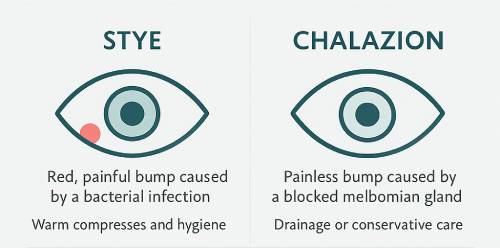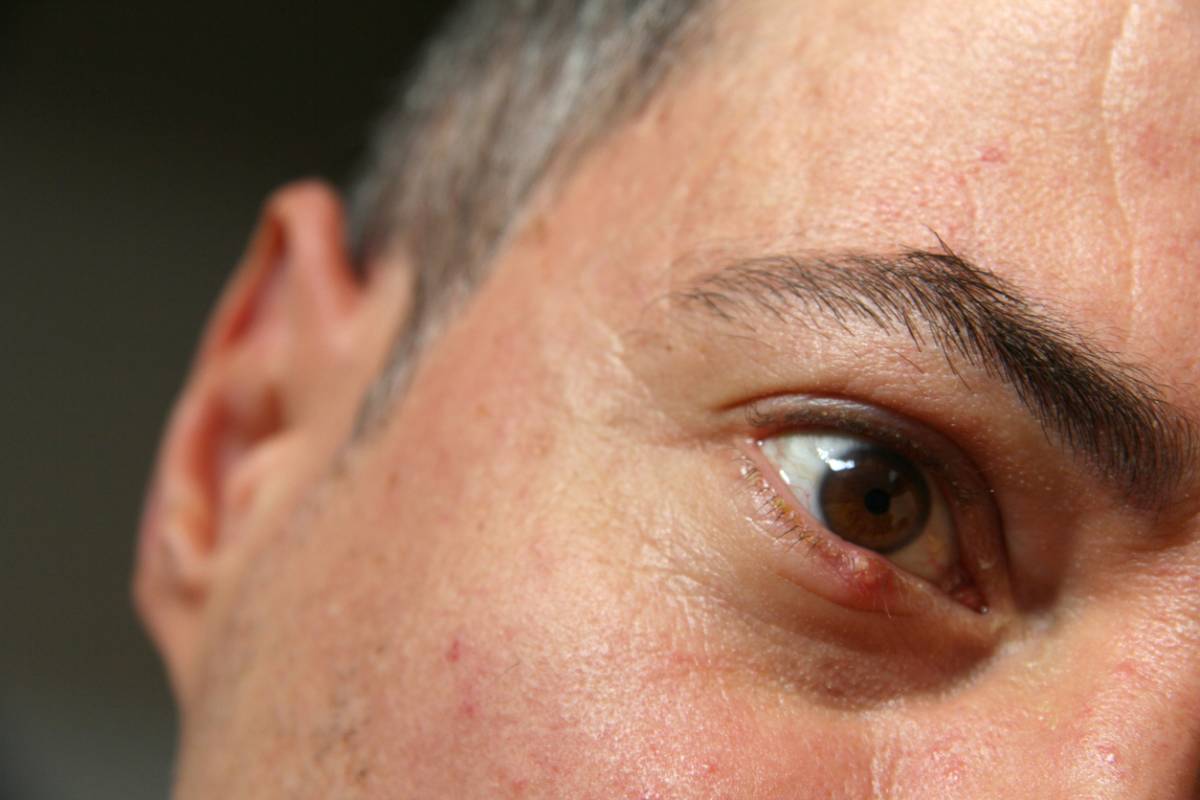Eyelid bumps are a common issue that can cause both aesthetic and functional problems. People who experience eyelid bumps are often insecure about their appearance. The bump can also cause discomfort, making daily life difficult. In many cases, eyelid bumps are not a cause for medical concern. However, this is not always the case, as some bumps can be a sign of an underlying medical condition. An assessment and treatment from a skilled oculofacial surgeon is necessary. They can determine the cause and create a customized treatment plan tailored to your needs. You may wonder, why do eyelid bumps form? We answer this question below and offer oculofacial care to boost your confidence.
Why Do Eyelid Bumps Form?

Eyelid bumps can occur for several reasons. In many cases, the most effective treatment for addressing the issue, regardless of its cause, is eyelid bump removal. However, it is important to understand the cause of the condition to address any potential underlying issues. Below are the common causes of eyelid bumps.
Bacterial Infection
One of the common causes of eyelid bumps is a bacterial infection. This is also referred to as a stye. Styes are painful, and they are caused by bacteria, resulting in red bumps. There are several ways bacteria can enter the eye and cause a stye. It can easily occur if you rub your eyes with unclean hands, sleep in your makeup, or share makeup with others. Poor eyelid hygiene increases the risk of contracting a stye.
The bacteria that enters the eye infects the oil glands at the base of the eyelash follicle. When this occurs, the immune system responds. This causes inflammation, swelling, and the formation of pus. These symptoms indicate that white blood cells are fighting the infection. In some cases, styes rupture and drain on their own. However, persistent styes are a cause for concern and should be examined by a medical professional.
Blocked Meibomian Glands
Another common cause of styes is the blockage of meibomian glands. This is also referred to as a chalazion. Poor blinking habits, excessive screen use, or an inflammatory skin condition often cause chalazions. It is also common among people who frequently rub their eyes or don’t fully remove their makeup. Chalazions can occur due to poor eye hygiene among people who wear contact lenses.
Meibomian glands serve the purpose of keeping the eyes moist. The glands secrete an oil that stabilizes the eye’s tear film and prevents evaporation. When the gland is clogged, the oil is backed up and causes a reaction. The inflammatory response results in a painless bump on the eyelids. The issue generally resolves on its own. In some cases, the bump can grow and irritate, as well as distort vision. If this occurs, removal by an oculofacial surgeon is necessary to address the unwanted symptoms.
Chronic Eyelid Inflammation
Chronic eyelid inflammation is also referred to as blepharitis. It is a chronic inflammatory condition. The condition is often linked to an overgrowth of skin bacteria, seborrheic dermatitis, or issues with the meibomian glands. This condition is common among people who don’t clean their eyelids regularly and have poor eye hygiene. It is also common among those with underlying conditions, such as rosacea, dandruff, or dry eye.
Regardless of the cause of the inflammation, it results in a disruption of the normal flow of oils. This can lead to blocked glands and recurring eyelid bumps. Blepharitis also increases the risk of bacterial colonization. This can exacerbate the condition, leading to skin flaking around the eyes and thickened skin. Consistent hygiene practices are necessary to control and prevent the condition. However, persistent blepharitis requires treatment from an oculofacial surgeon.
Contact Dermatitis
In some cases, eyelid bumps form due to allergic or irritant contact dermatitis. Allergic contact dermatitis is an immune reaction to a substance to which someone is sensitive. Irritant dermatitis does not cause an immune response and occurs when the skin barrier is physically disrupted. Topical products or environmental triggers can cause this. Common products include makeup, skincare products, and other cosmetics. The most likely culprits are eye creams, cleansers, and products with fragrances. Environmental allergens include substances such as pollen, dust mites, pet dander, mold spores, smoke, and air pollution.
Treatment for Eyelid Bumps
Treating eyelid bumps depends on the type of growth and the underlying cause. The good news is the condition can be treated effectively and efficiently. In many cases, conservative treatment is the first course of action. However, some eyelid bumps require removal. Below are the common treatment options for eyelid bumps.
Conservative Treatment Methods
Many eyelid bumps respond to non-invasive treatment methods. Under the care of an oculofacial surgeon, you can implement effective at-home treatment methods. This includes using a warm compress on your eye several times a day. This can open up the glands and promote drainage. You may also be prescribed eye drops or antibiotic ointments. These reduce inflammation and bacterial buildup. Observation by a skilled professional is necessary to monitor the progress of your conservative treatment.
Drainage Treatment
If conservative treatment is ineffective, drainage may be necessary to address the eyelid bump. The procedure is fast, smooth, and effective. An oculofacial surgeon gently numbs the eyelid. The local anesthetic is used to ensure your comfort during the procedure. The blocked gland is accessed from the underside of the lid. It is then drained to relieve pressure. This ensures a quick healing process and avoids visible scarring. An eye patch and ice pack are applied to reduce swelling and bruising after the procedure. The recovery process is minimal, and most patients are able to get back to their regular activities the next day.
Surgical Removal
Some eyelid bumps are difficult to remove with conservative treatments. Surgical removal is necessary for large and persistent growth. Surgical removal is short, as it takes just a few minutes. It is performed under local anesthesia for optimal comfort. The oculofacial surgeon carefully makes an incision to remove the bump. This ensures that scarring is minimized and there is no disruption to the eyelid’s structure. Stitches are rare but may be necessary for very large cysts. The surgery is beneficial in restoring the function and appearance of the eye.
Eyelid Bump Removal
If you have an eyelid bump, contact Dr. Nicole Langelier’s team today to schedule a consultation!

